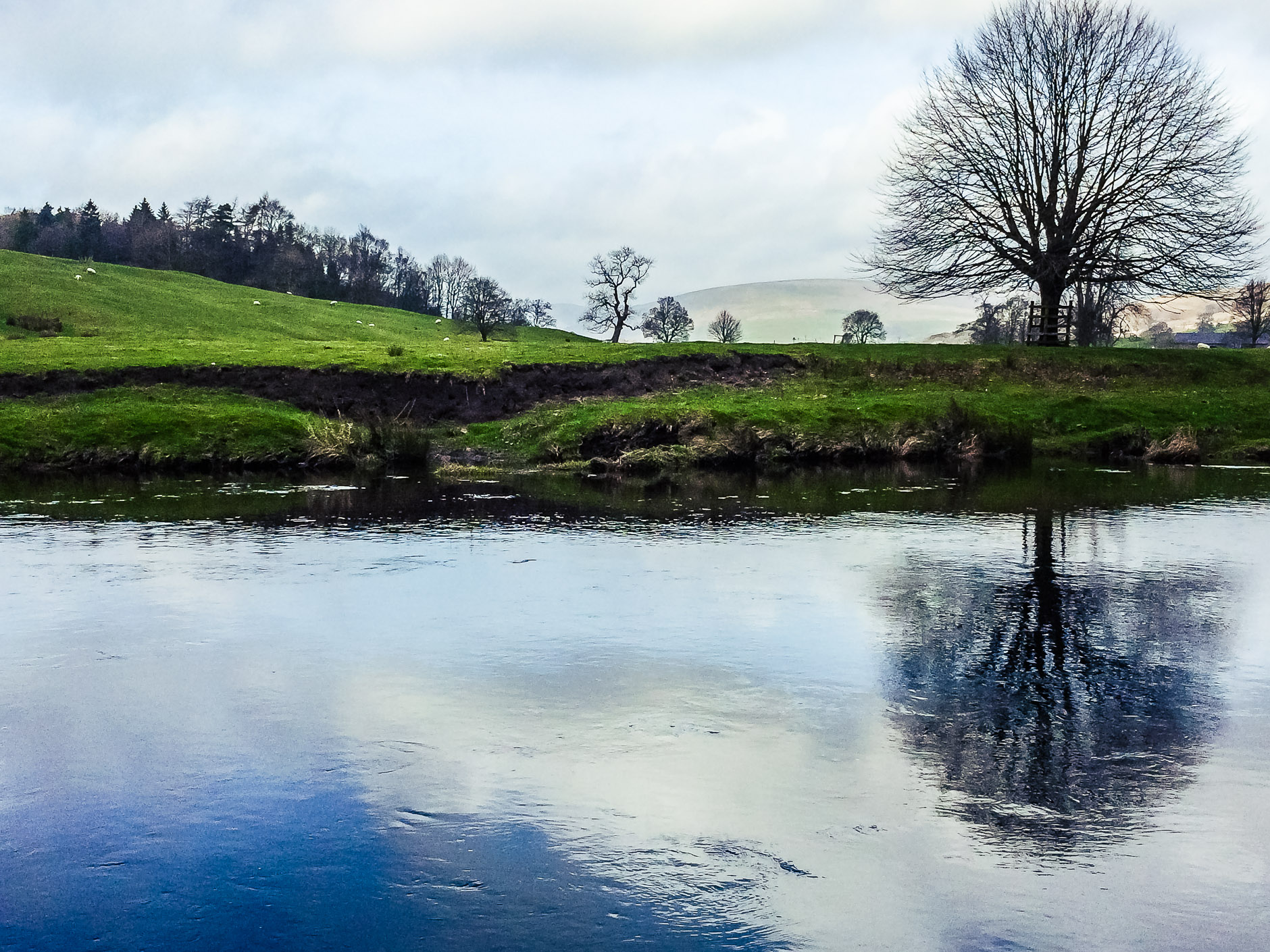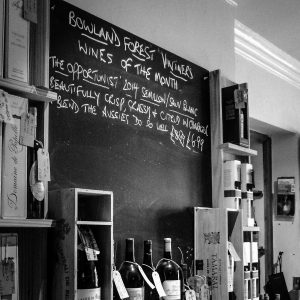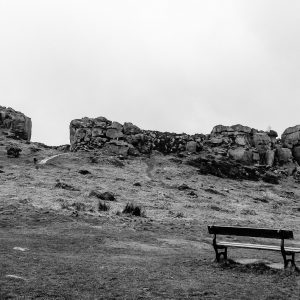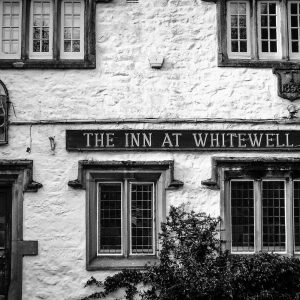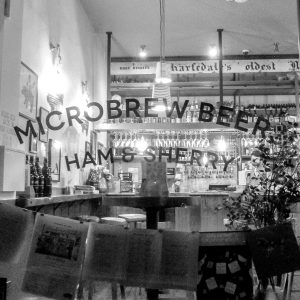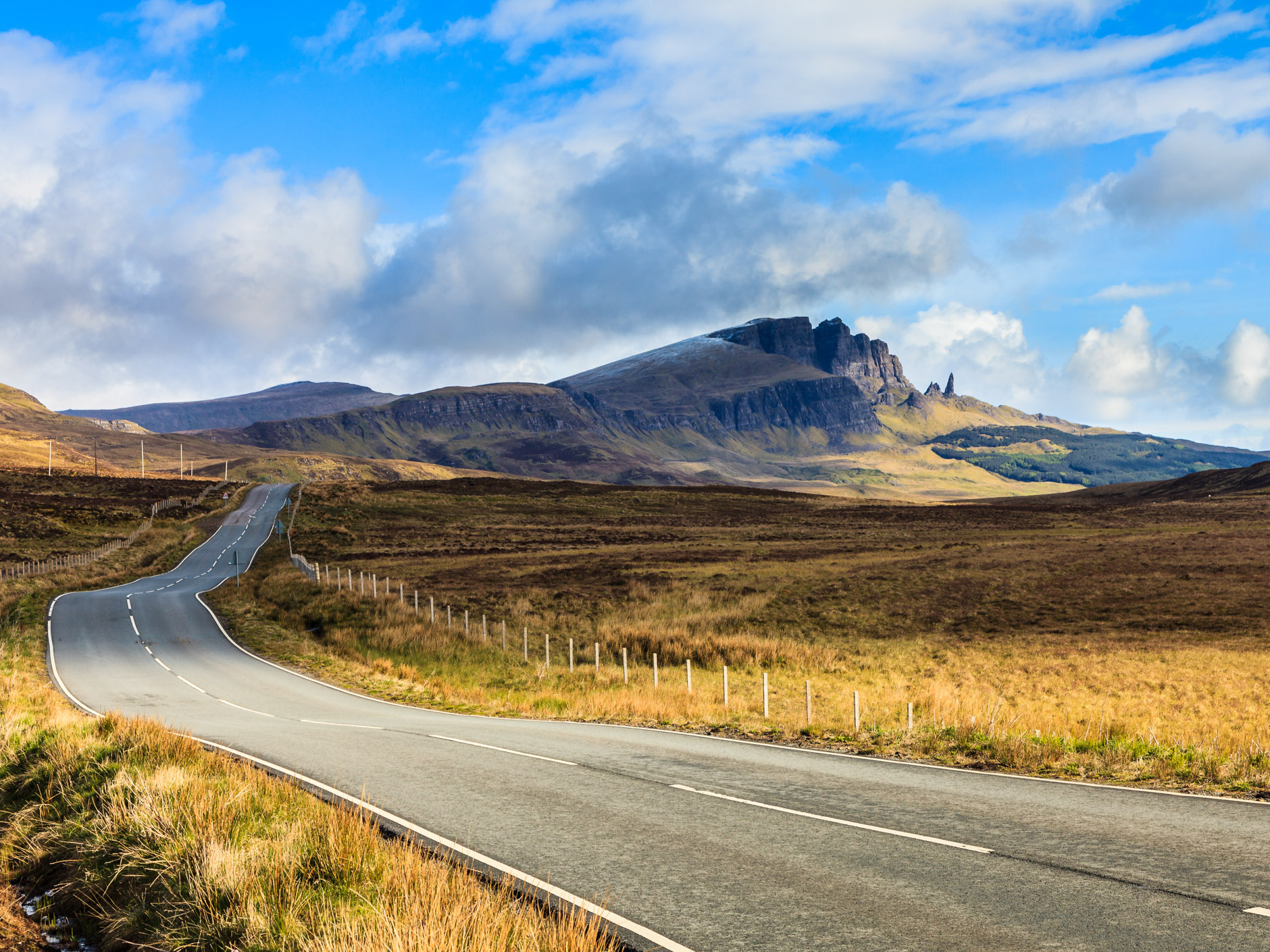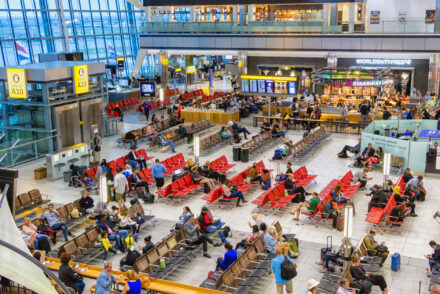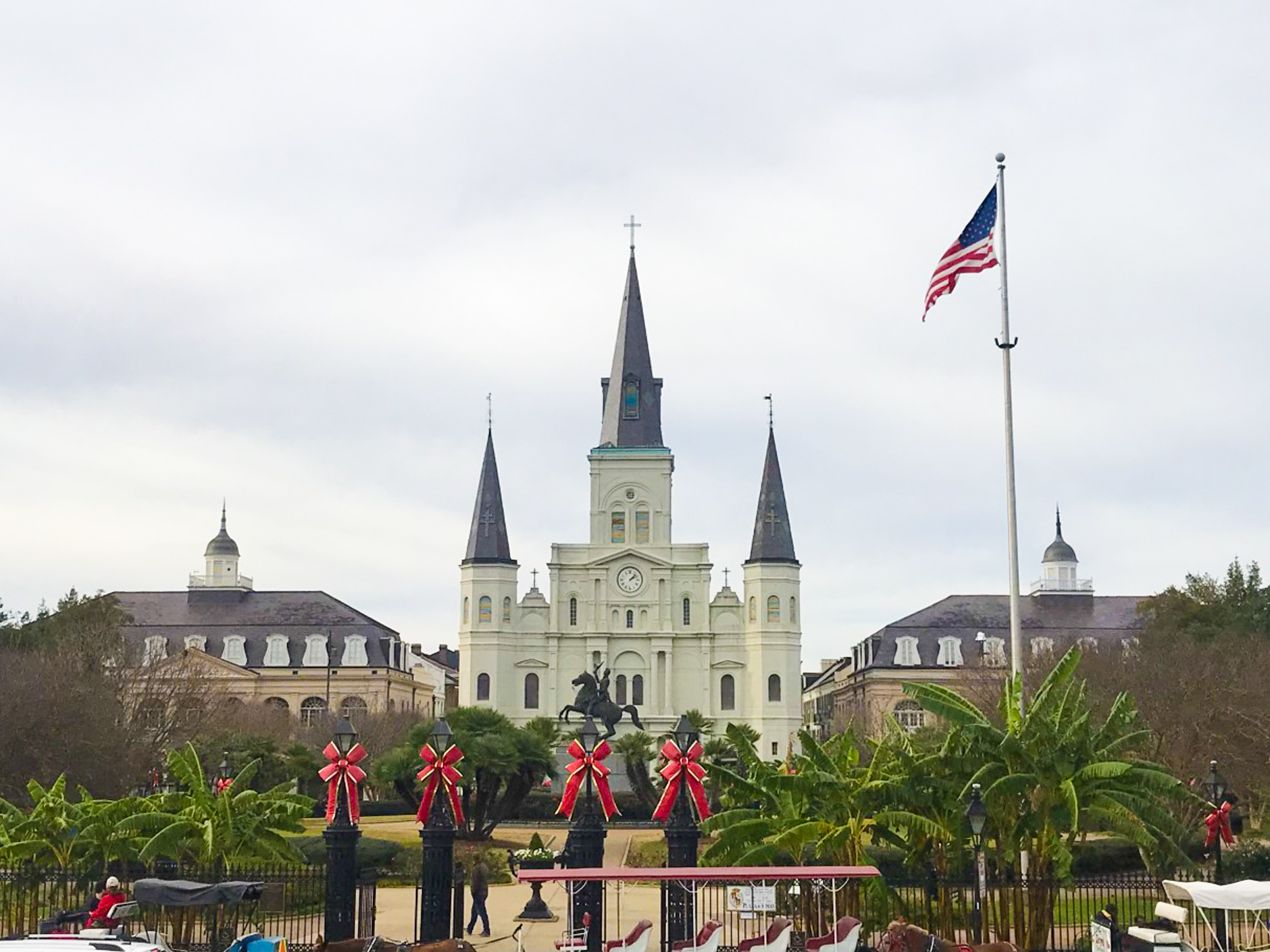Palate’s gastronomic tour of West Yorkshire and Lancashire
There’s no denying it: the less-than-favourable exchange rate at the moment means staycations are a far more viable option for a break away. But whatever your opinion on Brexit, one thing we can all agree on is there’s actually a lot to be said for exploring provincial England.
Palate has always been keenly aware of Yorkshire and Lancashire’s place on the gastronomic map. After a little research and planning, our co-founders escaped London and drove to the north and north west: what follows is a tale of discoveries, great food, pleasant locals and awe-inspiring scenery, all just a few hours’ drive away from the capital. As with the planning stage of the trip, the division of labour has so continued with the writing up, with J A Smith regaling part one of the odyssey, and C Ley the second.
Part I: Ilkley and Bolton Abbey
1. Ilkley
Working our way around Leeds, we followed the A65 to our first major stop: Ilkley, a.k.a. the gateway to the Yorkshire Dales. On the food front, picturesque Ilkley has always been best known for The Box Tree: this is where Marco Pierre White cut his teeth as a trainee chef in the 1970s and remained a sometime silent business partner whilst chasing Michelin stardom elsewhere. Like Marco’s career, the restaurant has had a chequered history over the years, but at least its original owners can be credited for one lasting legacy: introducing haute cuisine to northern England – nay even the whole country.
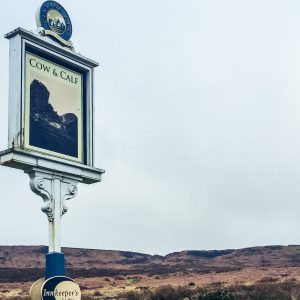
The Cow and Calf, Ilkley
But we wanted to see what the ‘real’ Ilkley had to offer. And really there is something for everyone in this quirky small town, from great pubs to restaurants to Betty’s Tea Rooms. Staying in the centre and with a cluster of eateries on our doorstep, it felt almost like a bigger version of Ludlow, Bray or Cartmel: a stone-coloured, soot-stained gastronomic playground.
We decided to start at the top of the hill and work down. Right at the top is the Cow and Calf, which is both a set of rocks and a decent pub. The pub, which commands amazing views over the valley, was rammed full with touring ramblers and rambling tourists. We couldn’t get a seat for love nor money. We tried the local beer and moved on, stopping off briefly at the neighbouring Cow and Calf café for soakage (they do a decent sausage roll).
And what coffee it was: bitter, rounded, and with the power of several resuscitation packs
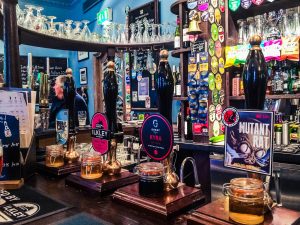
The Crescent Inn, Ilkley. Great for a local brew.
Rolling down the hill like an out of control Skipton pork pie in high gear, we slammed the handbrake on at Friends of Ham. A delightful bar-slash-coffee shop, Friends of Ham does what it says on the tin. Basically, charcuterie and wine for friends. What can go wrong? There’s also a decent selection of sherries. Dimly lit and rustically furnished, it’s equally attractive during the day. We popped in again the next morning just for coffee in its lounge area at the back. And what coffee it was: bitter, rounded, and with the power of several resuscitation packs. You could while away an hour or two or working with your laptop here (indeed, this is where some of this article was written).
Heading into the epicentre of Ilkley, we stumbled upon The Crescent Inn and its adjoining (but unrelated) Bistrot Pierre. The latter is a French bistro chain in the vein of Café Rouge, and, well, what more needs to be said? It’s a port-in-a-storm place for a bite to eat but nothing special. Not even a charming small town is immune from the spread of franchised chain outlets, but they have their place, annoying but tolerated: the grey in the temples, the H in Steps. The pavé rump steak was not the best cut of meat – it felt cheap and gristly. It was tempting to nip across the street to the butcher, buy a new one and cook it again. The Crescent Inn proved to be a better (liquid) offering: a pale session ale from the Ilkley Brewery or the delightfully named Mutant Rat (ABV 5.8%) that blows away the cobwebs.
2. Bolton Abbey and The Devonshire Arms
A 20 minute drive away and we found ourselves in the plush surroundings of The Devonshire Arms in Bolton Abbey, a superb hotel dating back to the 17th century and originally part of the Bolton Abbey estate near Skipton.
Its restaurant, The Burlington, boasts a true tome of a wine list. Unfortunately the list is unavailable online so you can’t carry out any due diligence beforehand. We conjectured this is to preserve some element of mystique, but being so biblical in length it can delay pre-prandial proceedings as you spend so bloody long reading it! In the end we settled on a Priorat with a decent amount of age, but it was a tough call. We asked if we could have the wine decanted and the tall maitre d’ responded “of course”, with the calm laconic authority of a Harley Street surgeon who handles your question “will there be anaesthetic?” with the snorting derision it probably deserves. Lying in bed, your appendix at bursting point, he responds “yes, see you tomorrow when you’ve had it out”. Yes, it’s obvious and axiomatic, but sometimes these things are worth double-checking.
towards the end of a Sunday evening The Burlington felt like a care home
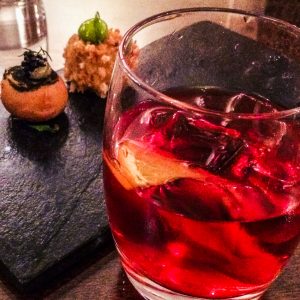
The Yorkshire Negroni at The Devonshire Arms: worth the wait
It would’ve been rude not to try their Negroni for a pre-dinner cocktail. This was made with a Yorkshire twist but charged at a London price point. It also took an age to be delivered. But we were in no rush. There is a ceremonial going-through-the-motions to the presentation of the menus, the canapés and so on, which you either like or you don’t. If you want to just crack on and have a steak, this ain’t the place. As we found generally on this trip, the pace is slower in this part of the country, which is actually a welcome relief. When you’re used to living in the rat race you occasionally have to stop yourself from appearing too conspicuous in these surroundings: as Withnail famously said: “we’re not from London!”
The restaurant has a romantic ambience with its muted pink and cream tones and soft lighting that’s easy on the eye, but towards the end of a Sunday evening The Burlington felt like a care home. The average age of the clientele seemed to be about 103. Though, of all the places you could die happily, this is probably it.
The service was good but not free from frustration: our Priorat was duly decanted but put out of reach, as if we couldn’t be trusted to pour it ourselves. This, combined with the formal no-jeans dress code, is a bit old school. They didn’t mind moving the wine closer but next time we might save the embarrassment of asking and just bring a leaf grabber from the nearest B&Q. The staff also had a habit of asking us “how was that dish?” after each course – well, if it’s terrible we’ll voluntarily proffer that information; vice-versa if it’s outstanding. But to interview us on each and every dish is a bit irritating.
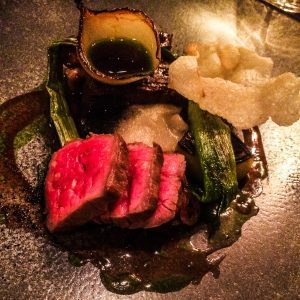
Beef and Lapsang Souchong at The Burlington
We were pleased to hear that a lot of the ingredients are sourced from their own kitchen garden. The honey is made by bees on site. Whilst that’s all wonderful, and the food was indeed well-executed, we found it a little safe, which no amount of amuse bouches or pre-desserts can hide. The starter of scallops with white truffle and chicken was an accomplished dish, though the chicken was over-seasoned. The clam chowder amuse bouche had cooled down and gone cold upon service. The beef main course tasted great, with a smoky soupcon of Lapsang Souchong… but was sadly lacking in beef. Indeed, there was substantially less beef than in the picture of the same dish on the restaurant’s website! The desserts were beautifully presented but clearly made from cheaper ingredients (mostly fruit sorbet-based) and designed to look expensive and cheffy. In all honesty, the cheese course was probably the best.
Don’t get us wrong, The Burlington is still a very good restaurant and worth the trek – it just won’t blow you away.
Anyhoo, with the acid reflux kicking in it was time to move on to the next part of the adventure…
Part II: Clitheroe & Hebden Bridge
3. Clitheroe and The Inn at Whitewell
My comrade and I journeyed from the east, completing part one of our adventure. We breached Lancashire and followed the winding, single tracks made neat by dry-stone walls running along them. As we approached the rural end of Clitheroe, we were grateful for daylight as we passed brooks, quaint bridges and farmland in pursuit of our much-anticipated destination: The Inn at Whitewell – a 17th century hostelry tucked away in the Forest of Bowland (as featured in the maiden episode of BBC’s The Trip, starring Steve Coogan and Rob Brydon).
Very occasionally, a pub, hotel or restaurant impresses in a way that has you reaching for hyperbole and praise in a way comparable to Giles Coren’s review of L’Enclume some years ago. On arrival at The Inn, the scene is breath-taking: an ancient church; the River Hodder set horizontally to the view and hills so high as to have their peaks consumed by clouds. The Inn building itself retains its classical charm and even bears the original “coffee room” signage.
The venue is a 5-star hotel by description. However, we’re not talking here of a contrived piece of luxury. It’s not similar to a spa hotel either. And the better for it. The Inn is somehow dilapidated, showing evidence of muddy dog walkers and hikers. At the same time, it’s uniquely lovely. The whole estate exudes charm. Even the naff blue carpet leading up to the bedrooms, fitting of a 2-star B&B, somehow adds – believe it or not – to the truth of the place; its integrity. This isn’t rusticity brought to you by interior designers who know which objets d’art to source from Pavilion Broadway. The Inn is the real deal.
Writing as an oenophile, it was with some excitement that Bowland Vintners – the slightly cramped, in-house wine shop at The Inn – doubled up as the hotel reception. I could barely concentrate on the check-in process as my tourist’s gaze took in the three walls decked with bottles.
With time to kill before presenting ourselves at the dining room, there was an opportunity to take in the main pub. One of its many credentials is an abundance of seating – whether for food, beer or coffee. A roaring fire, old stone floors and the use of dark wood lend the venue a typically countrified feel. Passing time sitting with the newspaper was a delight. The charm of The Inn sort of washes over you. The exigencies of daily life became temporarily forgotten.
The pub’s “proper” dining room, via a warren next to the bar, bears a more formal feel when compared to the rest of the eating and drinking area. There is an old stone fire with obligatory oil painting above it. The walls are painted duck egg and the tables laid very traditionally. Attention to detail is paid with the use of Riedel wine glasses, cut glass tumblers and chunky, Sheffield steel cutlery. Huge sash windows give life to the room and remind diners of the estate’s antiquity.
The batter on the monkfish was no heavier than tempura; lightly crunchy and piping hot
The menu that night was simplistic, with only a touch of avant-gardism. I think it’s what most readers would expect of a better-than-average rural retreat. And, as to the wine list: worthy of much praise. A genuinely interesting read, full of great vintages. There is quite a wine cellar going on at The Inn: it’s clearly a place which takes alcohol seriously and the mark up on rare clarets is very fair. After conferring, the two of us settled on a 1983 Gruaud Larose that would have been twice the price in London. It was as lovely as hoped.
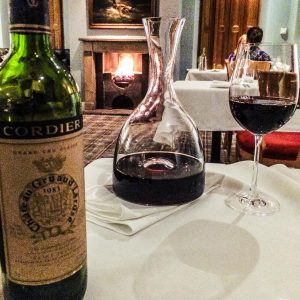
The 1983 St Julien at The Inn – what a wine and incredible value
The food stage turned out to be something of a tale of two cities. To begin with, I was served one of the finest courses of food I’ve so far experienced in my gastro adventures. The plate bore four scallops and a heap of battered monkfish fillets on wilted spinach. The batter on the monkfish was no heavier than tempura; lightly crunchy and piping hot. A varnish of something curry-like sat between the batter and the flesh of the fish. Enormous satisfaction lay in biting through the crisp outer layer to the soft, spiced catch. The flavours worked perfectly and the tones used on the monkfish overpowered none of the dish’s counterparts. All credit to Jamie Cadman, head chef at The Inn, for his innovation in this respect. My accomplice ate a starter of cured gravadlax with pickled cucumber, which he declared as quite good. The presentation was appealing and the portion size generous.
My fluke ordering held out as we were doled our mains (slightly more promptly than would be ideal, if I’m to moan). Mine was a fillet of beef; my colleague’s a lamb rack. Dealing with the runner-up firstly, it was jointly confirmed to be ordinary. Rare enough and OK on the eye – but tough (I tried some of it) and too chewy. I find it hard to excuse the restaurant for failing to handle a simple cut of lamb. The beef, by contrast, came charred and pink in the right places, needing only a butter knife to tackle it. Trappings in the form of fat chips and mushrooms were very pleasant. We suspected the chips had spent time in beef dripping, owing to their deep, Sunday roast flavour. A pity about the lamb, it has to be said. One change in the order could have elevated our mutual experience at The Inn at Whitewell from “ridiculously good” to “let’s stay on a few days”.
Ever the gourmands, we found space for a cheese course which, being honest, could only be chalked up as “good” after the trolley at The Burlington. We did at least benefit from local fayre. Then, nodding to Coogan and Brydon, we decamped to the bar area for our desserts and coffee. Puddings at The Inn change daily and we were presented with a fair list. I scooped up a panna cotta served in a wine glass, which was oddly runny but perfectly fine. It reminded me of Angel Delight. My co-author had a well-made lemon tart but felt that the fruit pieces scattered over it somewhat besmirched the dish.
The monkfish starter aside, it was difficult for the pleasure of the food to exceed that conferred by the ’83 St Julien, which was drank with so much gusto that a bottle of 2011 Barbaresco, bought in the vintner’s earlier that day, needed popping open by the dessert stage (corkage: £20).
Sitting in the bar area, full-bellied and eavesdropping on an office outing a few tables away, life was very good indeed. The Luddite in me found joy in the delivery of coffee only by the French press. And quality too – I remember some note about The Inn being involved in the coffee beans somehow. The flavour and effect were perfect.
We basked in the surroundings, seeing off the Barbaresco while the pub grew emptier. As alluded to, The Inn is a place in which to sit and do very little. An ideal setting for disowning life’s pressures. I imagine that the summer confers on guests the added benefit of looking out, on balmy evenings, at the winding Hodder, the hills and the roaming livestock.
Come 11pm, the staff busied themselves with their closing rituals. Spain this is not. As seen at The Devonshire Arms, you can’t bat on late in these country retreat sorts of places. It’s not entirely clear why the scene is in tune with a child’s bedtime, but there you go. Four courses and all the booze later, it was not difficult to persuade myself upstairs.
4. Hebden Bridge and The Blitz Café
Coming full circle (more or less), my touring buddy and I stopped off at the charming town of Hebden Bridge and reacquainted ourselves with our Britishness.
You see, even when daydreaming about retirement to southern France to live a life of cheese, wine and gout, I find the jet setting version of myself bound inextricably to the tea-soaked Brit within; the wasp-stung little Englander with a syrupy affection for cake sales and seaside chip shops. It was this patriotic sentimentality that had me hurtling towards The Blitz Café.
Quaintly decorated tables bear ration books doubling up as menus
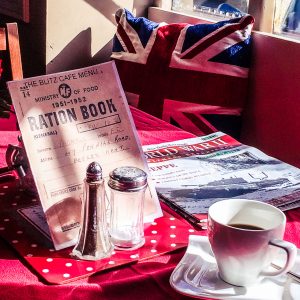
The Blitz Cafe, Hebden Bridge
I doubt you will encounter a more authentic, themed eatery. Like Nicholas Lyndhurst’s passage into the past in Goodnight Sweetheart, crossing The Blitz Café’s threshold is a surreal quantum leap. Brass wartime music with crackly vocals springs from the gramophone. Quaintly decorated tables bear ration books doubling up as menus. The waiting staff are in full 1940s garb. There is not an electronic or modern device in sight – consistent with the obvious dedication to the subject. I thought (maybe mawkishly) of generations past. It was wonderful to sample a part of that, even in this facsimile environment. Most consider that there is a difference between an ode and a gimmick, and The Blitz Café is truly the former.
Sat upstairs with a view of the square, we received tea in shabby china vessels and a good-sized plate of salty, rich, Welsh rarebit. Other menu items included corned beef hash and variously filled pies. Unable to resist the abundance of wartime-inspired puddings, I rounded off with cake made using Camp Coffee – the liquid coffee substitute made famous in the empire era and resurgent in Britain’s most notorious period of making do: the Second World War. I took great pleasure in the surroundings and the truthfulness of the food. At least an hour was spent at The Blitz Café, even though we only intended it to be a fleeting visit.
As to the town of Hebden Bridge: its enormous visual appeal, and resulting tourist influx, is conferred by soot-blackened stone buildings and, of course, the infamous bridge over the waterway running through the town (specifically: the confluence of the River Calder and the Hebden Water). Up the hill, with the river off to the left, delightful scenery lines the high edges of the town. As with so many places saturated with visitors, Hebden Bridge merges natural and man-made beauty seamlessly. It’s more than worthy of a look and, thanks to The Blitz Café, a historical food frolic to boot.
It was then time to return to London. Impressed by the sheer amount of ground covered in just 48 hours, our eyes opened, and great food consumed, it was with some reluctance that we left behind the world of quaint bridges and rolling countryside. But one thing is for sure: Palate will be back and we hope we’ve inspired you to check out this region of England too.
The Inn at Whitewell
Forest of Bowland
Lancashire
Clitheroe BB7 3AT
The Devonshire Arms
Bolton Abbey
Skipton
BD23 6AJ
May 2017

